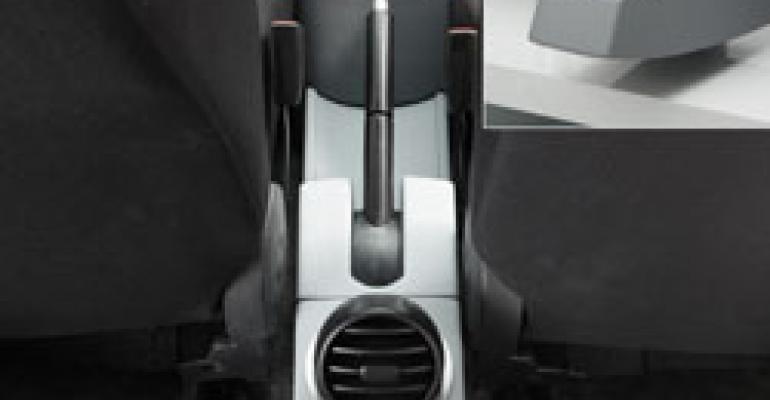
TROY, MI – Many commonly held perceptions about the Indian automotive market are inaccurate, including consumer desire for ultra-low-cost cars, a top Visteon designer says.
Richard Vaughan, global leader-Innovation and Design, says studies launched in 2008 by the supplier to understand the Indian market are revealing.

“In 2008, we thought the solution for vehicle in India was ultra-low cost, but that’s not the case,” he says during a presentation at the IDSA Michigan Transportation Design Conference here. “In a lot of segments, consumers value technology and features more than Western consumers do.”
That glimpse into the mindset of the Indian consumer armed Visteon with the knowledge it needed to offer its OEM customers an instrument panel featuring multiple control interfaces.
In most mature markets, the goal is to streamline control clusters to minimize clutter and increase efficiency. But Indian drivers embrace a multitude of switchgear, Vaughan says. “They want people to see (the technology) because it’s a status symbol.”
The Visteon study, dubbed the “Growth Market” project, also revealed how diverse India is.
Mumbai, for example, is a bustling, modern city. But on the outskirts are small towns where streets are crowded with oxcarts and motorcycles often carrying an entire family, he says.
Such dichotomy presents interesting challenges for auto makers and their supplier partners.
Recalling a recent trip to India, Vaughan says road conditions also must be taken into consideration when designing new automotive products.
“I was in traffic and there was a guy in a SUV in one lane, a guy on an elephant in another and a guy on motorcycle with his family in another,” he says.
“The insight from that is it impacts the human-machine interface. In the U.S., there are smooth roads and less distraction, so you process information better than in India, where there’s an elephant next to you,” he says, adding Indian roads often are dusty, making it necessary to develop products that are easy to clean. Because of low income levels among many Indian consumers, vehicles often are used in multiple roles, Vaughan says. Some consumers may use their vehicle to make deliveries during the day and use it to transport the family in the evening.
To accommodate this regional need, Visteon developed an instrument panel providing maximum room for hauling and then, via a hidden sliding panel, can be reconfigured for passenger-vehicle use with all the amenities an Indian consumer wants and needs.
Developing such an IP was no easy task, as it involved working around the climate-control system hidden beneath the dash, he says.
“The dash is designed to hide a very large air conditioner and ductwork,” Vaughan says. “We had to work with our climate guys to design systems that fit with the packaging required.”
The climate engineers also assisted Visteon designers by developing a low-cost solution to conditions unique to India’s driving population: a single blower apparatus for the rear seat that does not provide cooled air, but rather acts just as a fan.
“When you’re in India and it’s 120° F (50° C) and you’re driving a $4,000 car with two screaming kids and your family, you want air blowing on you quickly,” he says. “We’ve shown it to customers and they can’t believe the simplicity of it.”
Color can be a sticky topic in India, where Hindus and Muslims live side-by-side. Visteon’s research indicates some colors are best avoided to prevent alienating specific customers. For example, orange is linked with Hinduism, while green often is associated with Islam.
Religion affects design in ways most auto makers and suppliers never suspected, Vaughan says, noting Indian customers’ affinity for attaching religious figurines on their vehicles’ dashboards. So Visteon has developed dashboards with a space for the icons.
“Everybody customizes their vehicles in India,” he says. “And many have religious icons glued to the center of the IP. Very few OEMs take this into consideration and it’s very important.”
Although Visteon is based in North America, its focus on India is understandable. Vaughan says only 15% of the supplier’s business comes from the U.S., while big things are projected for India and other emerging markets.
According to Visteon data, there only are 16 registered vehicles in India per 1,000 people. That compares to 458 vehicles per 1,000 people in the U.S.
Should the number of registered drivers in India and China reach 100 vehicles per 1,000 people, which is likely, it would mean 12.6 million more vehicles purchased per year in incremental growth.
“Understanding what’s happening in these markets is key to our future,” Vaughan says.





